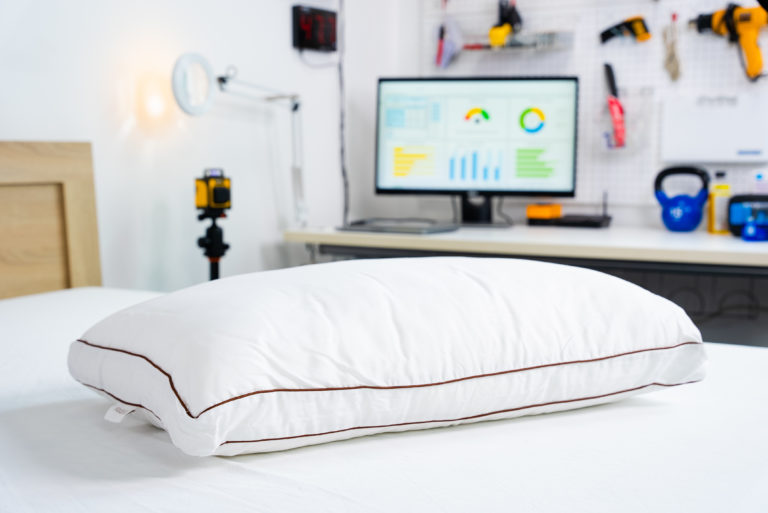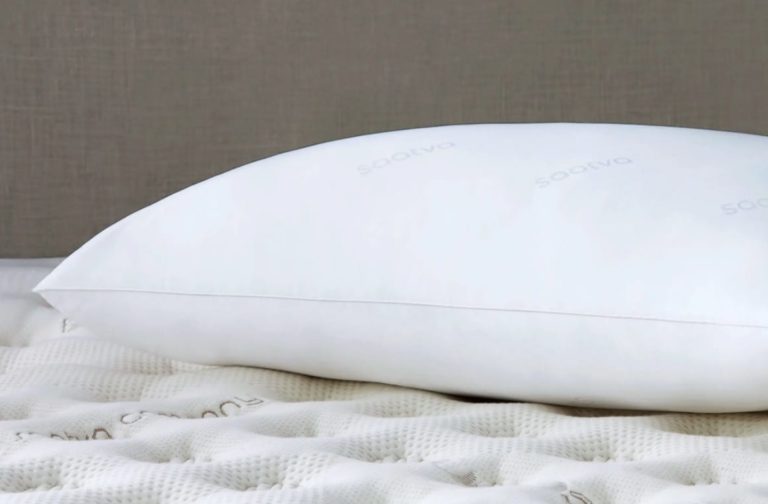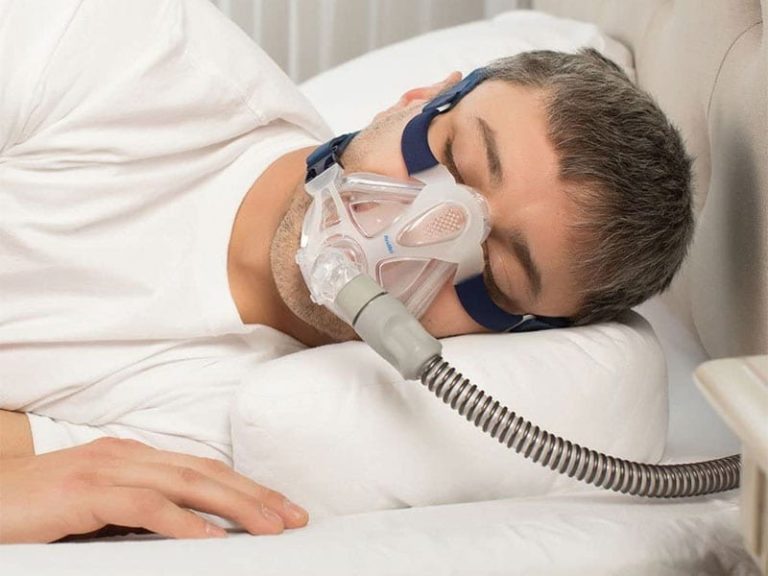When you buy through our links, we may earn a commission. Products or services may be offered by an affiliated entity. Learn more.
Best Toddler Pillows
Sleep hygiene is important for everyone, but it’s especially essential that children and toddlers get quality sleep since their bodies are growing quickly. Furthermore, if your toddler gets a good night’s rest, the odds are that you will too. You may have already done your mattress and bedframe research, but choosing the right pillow is also essential to your toddler’s comfort and safety.
Though the timeframe does vary, many children over 18 months are ready for the additional comfort a pillow provides. Introducing a pillow to your toddler does come with some caveats, however, as there are important safety requirements to consider. Although infants are more at risk for sudden infant death syndrome (SIDS) and suffocation, toddlers may still be susceptible to a similar risk, sudden unexplained death in childhood (SUDC), with improper pillow use.
We outline the most important features to look for in a toddler pillow, such as filling, support, size, and material quality. We’ll also highlight our top picks and explain what aspects set them apart from other models so you can more confidently select the right fit for your child.
The Best Toddler Pillows
-
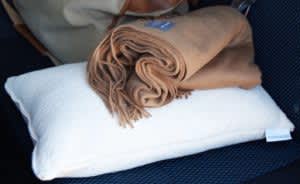
Best Overall
Avocado Organic Toddler Pillow
Shop Now
-
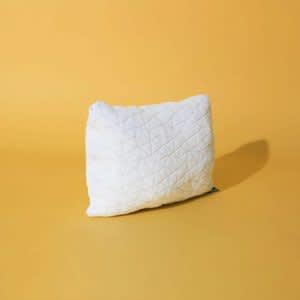
Best Value
Coop Sleep Goods Toddler Pillow
Shop Now
-
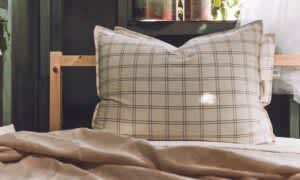
Most Comfortable
Brentwood Home Lilypad Kids Natural Pillow
Shop Now
-
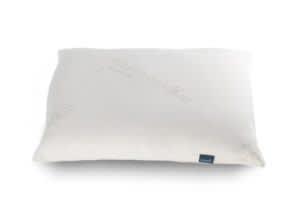
Best Organic
Naturepedic Organic Cotton/PLA Kids Pillow
Shop Now
-
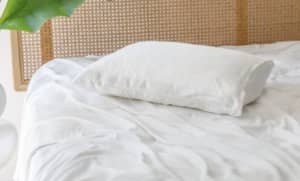
Best for Combination Sleepers
Nest Bedding Easy Breather Jr.
Shop Now
In-Depth Reviews
Best Overall
Avocado Organic Toddler Pillow
Use this SleepFoundation.org link for the most current discount on Avocado pillows
Shop Now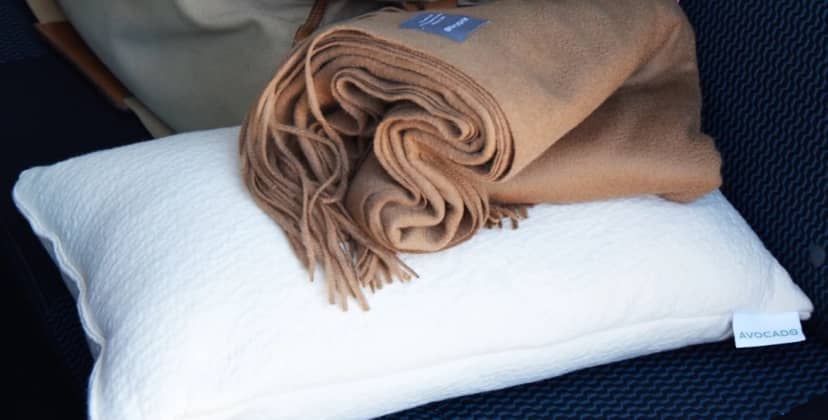
-
Pros
-
Organic fill consists of shredded latex and downy-soft kapok fibers
-
Breathable organic cotton cover
-
Pillow has received Made Safe and Forest Stewardship Council certifications
-
-
Cons
-
Not suitable for toddlers with a latex allergy
-
May feel too responsive for toddlers who enjoy a squishy pillow
-
Price
$25
Fill
GOLS-certified organic latex and GOTS-certified organic kapok fibers
Firmness
Medium
Avocado’s product lineup exemplifies the company’s commitment to sustainable production and the use of organically grown natural materials. The Organic Toddler Pillow is one of the brand’s latest additions to follow this trend. The cover is composed of organic cotton, while the fill is a blend of shredded latex and soft, down-like fibers from kapok trees. Despite its high-end design, the pillow is quite affordable and a good option for parents with tight shopping budgets.
Avocado recommends the pillow for ages 2 and up. A loft of 3.5 inches should provide adequate support without elevating the head and neck too much. For safety reasons, the shell is not equipped with a zipper. This means you won’t be able to machine-wash the pillow and should only spot-clean the surface as needed. Avocado offers a machine-washable organic pillowcase to help you keep the pillow clean. A compact shape makes the pillow well-suited to travel, as well.
In addition to being reasonably priced, the Organic Toddler Pillow qualifies for free shipping to customers in the contiguous U.S. Each order comes with a 100-night sleep trial, giving your toddler ample time to test out the pillow and decide whether they like it. Your purchase is also backed by a 1-year warranty against structural and workmanship defects.
Best Value
Coop Sleep Goods Toddler Pillow
Use this SleepFoundation.org link for the most current discount on Coop Sleep Goods pillows
Shop Now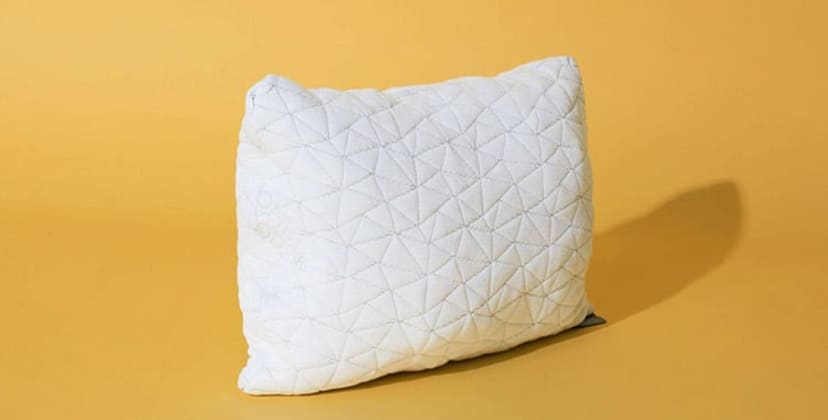
-
Pros
-
Adjustable to accommodate changing needs
-
Machine-washable and hypoallergenic
-
100-night sleep trial
-
-
Cons
-
Memory foam may retain some heat
-
Toddlers sensitive to smells may notice an off-gassing odor at first
-
Price
$35
Fill
Shredded memory foam and microfiber blend
Firmness
Medium Firm
The Coop Home Goods Toddler Pillow’s shredded memory foam and microfiber fill balance support and conforming for lasting comfort at an affordable price-point.
Designed for children age 2 to 8, the Coop Home Goods Toddler Pillow is CertiPUR-US and GREENGUARD Gold certified to be free of harmful chemicals, heavy metals, and excessive volatile organic compounds (VOCs). The pillow is also hypoallergenic, making it suitable for children with allergies and environmental sensitivities.
The fill consists of cross-cut memory foam and microfiber to provide medium firm support while also maximizing comfort. The supportive design encourages spinal alignment and adjusts to your child’s size and individual sleeping style. To adjust to a child’s changing needs and preferences, owners can add or remove fill to change the loft and firmness.
A flexible and lightweight polyester liner lets the pillow bend and move to fit the child’s shape. The case is made from extremely breathable Lulltra fabric to allow heat to escape. This fabric is a blend of polyester and bamboo-derived viscose rayon. The entire pillow is machine-washable and may be dried on a low setting, but Coop Home Goods does not recommend washing the pillow more than once a year.
The Coop Home Goods Toddler Pillow is made in the United States and is cruelty-free. It is backed by a 100-night sleep trial and a 5-year warranty for additional peace of mind.
Most Comfortable
Brentwood Home Lilypad Kids Natural Pillow
Use this SleepFoundation.org link for the most current discount on Brentwood Home pillows
Shop Now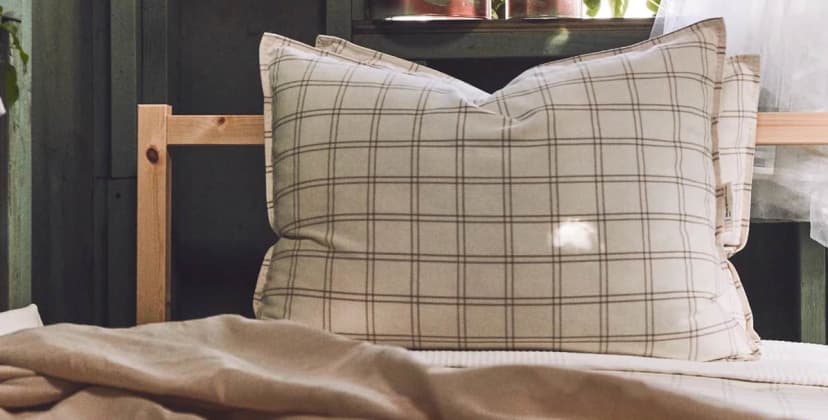
-
Pros
-
Kapok fibers and shredded latex offer a balance of plushness and support
-
GOTS and GOLS certifications ensure organic sourcing
-
Composed of naturally cool materials
-
-
Cons
-
Might trigger symptoms in children with a latex allergy
-
Not machine-washable
-
Price
$59
Fill
GOTS-certified organic kapok fiber, shredded GOLS-certified organic latex
Firmness
Medium
The Brentwood Home Lilypad Kids Natural Pillow has a slender profile and plush design that caters to young children who enjoy snuggling their pillows.
The pillow is filled with silky kapok fibers and shredded latex that give the pillow a fluffy, moldable feel. The responsiveness of the latex offers just enough support to keep your toddler’s head comfortably elevated, while the thin profile is ideal for young children who find adult-sized pillows too thick and lofty.
Children who easily get hot during sleep should find the Lilypad comfortable, since latex and kapok retain minimal heat. The cover is also composed of cotton, which has natural breathable properties. The kapok and cotton carry GOTS certification to ensure organic sourcing and the latex is GOLS-certified organic, so we recommend this pillow for parents who prioritize children’s bedding that is non-toxic and sustainably sourced. You may spot-clean the pillow with a damp cloth and then air dry.
Brentwood Home offers free shipping to addresses in the contiguous U.S. You’ll receive a 30-night sleep trial so that your child can try the pillow at home. The item is also backed by a 1-year warranty.
Best Organic
Naturepedic Organic Cotton/PLA Kids Pillow
SF Readers get 15% off sitewide at Naturepedic with code SF15
Shop Now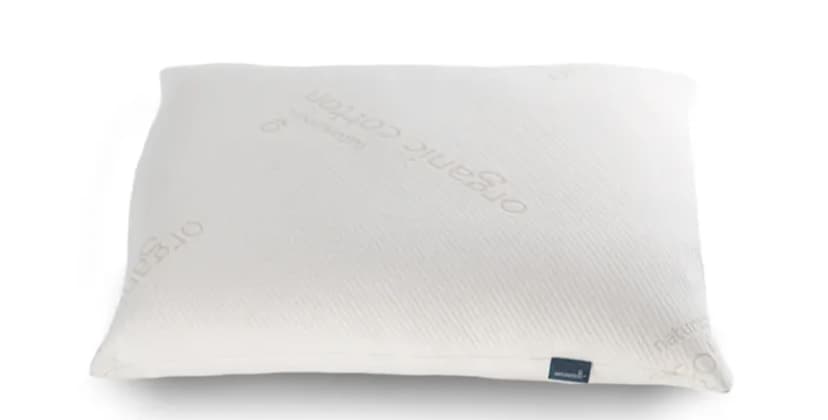
-
Pros
-
Sustainably sourced PLA fill derived entirely from sugarcane
-
Organic cotton cover is soft and breathable
-
Available in two lofts
-
-
Cons
-
Above-average price-point for a toddler pillow
-
Pillow should not be washed in a household machine
-
Price Range
$69 – $79
Fill
PLA batting
Firmness
Soft
Naturepedic offers many sleep products that are well-crafted and sustainably produced. The Organic Cotton/PLA Kids Pillow checks all of these boxes — and as an added bonus for parents, the design is completely non-toxic. The down-like PLA fill is derived from sugarcane, while the cover is composed of untreated organic cotton. No harmful chemicals or petroleum are used in manufacturing, and the pillow does not release any off-gassing odor even when brand new.
The organic cotton has moisture-wicking properties to help kids stay cool while they sleep. Naturepedic recommends spot cleaning the pillow if stains occur, as machine washing can cause permanent structural damage, so you may want to invest in a pillow protector to make the pillow easier to clean.
You can choose from two loft levels, one a bit higher than the other to help your child sleep comfortably on their side. Both designs are reasonably priced, and Naturepedic offers free shipping throughout the contiguous U.S. Your order comes with a 30-night trial. If you keep the Organic Cotton/PLA Kids Pillow after the trial ends, you’ll also receive a 1-year warranty against material defects.
Best for Combination Sleepers
Nest Bedding Easy Breather Jr.
Use this SleepFoundation.org link for the most current discount on Nest Bedding pillows
Shop Now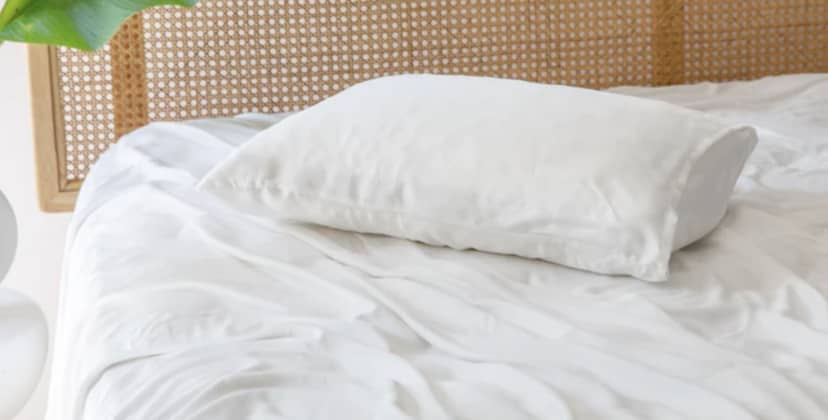
-
Pros
-
Shredded foam and down alternative fibers create a plush, adaptive surface
-
Fill can be added or removed to adjust the loft
-
Two-packs come with a 30% discount
-
-
Cons
-
Foam is prone to heat retention
-
Some toddlers may notice a slight off-gassing odor in first few days
-
Price
$49
Fill
80% shredded memory foam, 20% down alternative fibers
Firmness
Adjustable
As toddlers transition to big kid beds, many begin to experiment with sleep positions — and this can mean their pillow doesn’t offer enough support. The Nest Bedding Easy Breather Jr. is fully adjustable, allowing you to add or remove fill and change the loft based on which position your child currently prefers. We recommend a full shape for side sleepers, mid-range loft for back sleepers, and minimal fill for stomach sleepers.
The fill consists of shredded memory foam and down alternative clusters. This blend is both soft and adaptive, resulting in a cloud-like surface for the head and neck that promotes even alignment and reduces pressure. The cover is composed of a proprietary fabric blend engineered to dissipate heat on contact, so the pillow is also a solid choice for hot sleepers. Since the fill is encased in a liner pouch, you may separate it from the cover and machine-wash the latter whenever a cleaning is needed.
The Easy Breather Jr. is affordably priced, and you’ll receive a 30% discount if you include two pillows with your purchase. Nest Bedding adds a breathable bamboo-derived viscose pillowcase to your order at no extra cost. Standard ground shipping is free of charge, and all pillows are backed by 30-night trial periods and two-year warranties against manufacturing defects.
How to Choose a Toddler Pillow
Good sleep hygiene is essential to a toddler’s wellbeing. Introducing a pillow at the right time can enhance your toddler’s comfort and sleep quality. Adding a pillow often coincides with a milestone in growth development as well as the transition from a crib to a bed, but there are still certain safety requirements to consider. We’ll discuss the most important factors to weigh when purchasing a toddler pillow, such as material quality, size, and firmness.
What to Consider When Purchasing a Toddler Pillow
The best toddler should have just the right amount of fill so that a toddler’s spine, neck, and head are at an optimal angle. Size, support, firmness, and material quality are a few critical factors to consider when making your purchase. Given this accident-prone age, washability is also an important feature to keep in mind. Not only can it make your life easier, but it can also help you keep your toddler clean and comfortable.
Fill Materials
You want to make sure that your child’s neck and head are at the correct angle to encourage proper spinal alignment, as this is beneficial to a toddler’s comfort and growth. The quantity of fill is therefore important since it determines lift. Fill for toddler pillows can range from natural materials, like cotton and fiber, to synthetic, like foam and polyester. The type of material will also determine whether or not the pillow itself can be washed.
Size
Toddler pillows are smaller than adult models, with an average size of 13 by 18 inches. A pillow that is too large may overwhelm your toddler and could potentially cause entrapment. The more compact size also makes the pillow travel-friendly for preschool, daycare, and car or plane trips.
Support
This factor is very important to consider when shopping for a toddler pillow, as the right amount of support will promote good sleep posture. One that is too firm will be uncomfortable and force the head upwards, but a very soft pillow may not be supportive enough for a toddler’s growing neck and spine.
Firmness Level
A pillow’s firmness level directly relates to its aforementioned support. Since toddlers have typically slept without pillows and aren’t accustomed to a lot of cushioning, they usually rest more comfortably on firmer options that retain their shape and lift for consistent spinal support.
Hypoallergenic Materials
A toddler’s skin is more sensitive, and itchiness and allergic reactions could keep your child up at night. Parents often prefer to look for a pillow made with skin-safe, hypoallergenic materials, which will reduce your child’s exposure to environmental triggers like bacteria, mold, and dust. Regular washings can also limit the buildup of allergens on the pillow.
Certifications
Considering how much time your toddler will be spending with the pillow, it’s a good idea to verify that it won’t expose your child to harmful substances. Certifications like CertiPUR-US, GREENGUARD Gold, and OEKO-TEX ensure that the pillow is free of certain potentially harmful chemicals, heavy metals, and other substances.
Care Requirements
Leaks, spills, and accidents are inevitable at this age, so finding a pillow with easy maintenance can save parents time and effort. Sometimes the entire pillow will be machine-washable, while in other cases only the cover can be tossed in. In either scenario, be sure to follow the recommended washing instructions carefully, as this will help ensure the pillow’s longevity.
Adjustability
This refers to whether the owner can alter the firmness or loft of the pillow. Some toddler pillows can be unzipped so that you can add or remove fill to make adjustments. Since children’s needs and preferences change as they grow, adjustability can be a bonus that allows you to better customize the pillow for more optimal comfort and support.
Price
Pricing typically depends on the pillow’s composition. Models made from organic materials usually command a higher price due to the added expense for manufacturers. With that said, there are many high-quality toddler pillows on the market for less than $30.
Toddler Pillow Safety
Given that the toddler years are a crucial stage of growth and development, it’s important to exercise due diligence when shopping for your toddler’s pillow. The timeline for introducing a pillow varies, but experts generally recommend waiting until a child is at least 18 months old. However, you should also take into account your child’s stage of development and speak to their doctor to make sure they’re ready for this change.
To ensure your child’s safety and comfort, pay attention to a pillow’s size, firmness, material content, and recommended age range in order to reduce the risk of entrapment and promote healthy neck and spinal alignment. Parents should also make sure to follow the manufacturer’s instructions for use.
When Can My Toddler Start Using a Pillow?
Pillows pose too many hazards for infants, so experts recommend waiting until at least 18 months or even age 2 before introducing a pillow. Even if your toddler has already transitioned to a bed, it doesn’t necessarily mean he or she is ready for a pillow. Some toddlers still do quite well sleeping on a flat surface, but if you notice your child is bunching up blankets or stuffed animals to prop their head up, then it’s a pretty strong indicator that they may benefit from a pillow.
Does My Toddler Need a Pillow?
It’s helpful to keep in mind that pillows are for comfort, and young children don’t have the same comfort needs as adults. If your child is still sleeping soundly on a flat surface, then you probably don’t have to introduce a pillow just yet.
If your child seems to have especially weak neck muscles, then it also may be best to delay adding a pillow. They are accustomed to sleeping pillowless, so going without one for a little while longer might actually help your toddler transition more seamlessly from a crib to a bed. If your child is older than 2 and begins to toss and turn, then he or she might be seeking extra comfort and be ready for a pillow.
What Pillow Materials are Safest for Toddlers?
Material safety is a top concern when it comes to toddler pillows. A toddler is at a much lower risk of suffocation and entrapment when compared to an infant, but certain pillow materials still pose hazards for even older children.
Avoid any pillow made with tiny pellets or pieces, as this presents a choking risk if the pillow were to tear and leak. Your child might also have allergies you don’t know about yet, so it’s usually best to err on the side of caution and opt for a model made with hypoallergenic materials.
Most parents avoid down and other natural feather pillows for their toddlers because they are possible allergy triggers. Toddlers are also more vulnerable to toxins than adults, so it’s important to look for fill and cover materials that haven’t been treated with potentially harmful chemicals. For this reason, many parents prefer organic materials.
Are There Any Safety Certifications to Look For?
Instead of just taking a brand’s safety and quality control claims at face value, it’s a good idea to look for certifications. Certifications typically use third-party testing to ensure a product meets established standards.
CertiPUR-US
This certification indicates that foam is free from specific components thought to be harmful, such as heavy metals, formaldehyde, flame retardants, and ozone depleters. It also verifies that the foam measures low in volatile organic compounds (VOCs).
GREENGUARD Gold
GREENGUARD Gold certification verifies that a product has low chemical emissions according to established testing methods. This program has especially strict guidelines for total VOC emissions, which means that off-gassing should be limited.
Global Organic Textile Standard (GOTS)
This standard certifies that textiles are made according to organic guidelines, from raw material through processing. GOTS also includes standards for the fair treatment of workers.
OEKO-TEX
OEKO-TEX tests for the presence of 100 substances that can present health and/or environmental risks. It is one of the world’s best-known certifications and ensures high product safety.
Other Toddler Sleep Safety Considerations
Though toddlers are more robust than infants, there are still a number of sleep safety considerations to keep in mind. We’ll outline the most critical factors to address when shopping for a toddler pillow.
Pillow Size & Firmness
Most toddler pillows are on the smaller side for a reason, as a large pillow could pose more of a suffocation risk. The average toddler pillow is around 13 by 18 inches, which is spacious enough to be comfortable without overwhelming their small heads.
The pillow should also be reasonably firm, as one that is too soft and doesn’t retain its shape could pose a greater suffocation risk. Toddlers still have relatively weak necks, so a firmer design will give them the support needed to promote proper spinal alignment. Your toddler might reject a pillow that is too firm, however, because it may be uncomfortable.
Crib Climbing
If your toddler hasn’t transitioned to a bed, it’s especially important to avoid overly thick and large pillows. Toddlers might get creative and use them as props to climb out of the crib, posing an obvious safety risk. The same goes for large stuffed animals and toys, which are best left out of the crib.
Sudden Infant Death Syndrome (SIDS)
Children younger than 18 months should not sleep with pillows, blankets, or bumper pads in the crib since this increases the risk of sudden infant death syndrome (SIDS), which typically occurs during sleep. Improper pillow use can potentially block an infant’s airway, leading to suffocation. Though more of a risk for infants than toddlers, the latter may still be vulnerable to sudden unexplained death in childhood (SUDC) if a pillow is the wrong size, thickness, or firmness.
It’s normal to have some lingering questions as you shop for the best toddler pillow. We will address the most commonly asked questions about toddler pillows, such as cost, appropriate crib use, size, and cleaning.
Frequently Asked Questions About Toddler Pillows
How much do toddler pillows cost?
The average toddler pillow costs between $15 to $50. The price-point typically depends on the type of materials used. Cotton and polyester fill pillows tend to be more economical, whereas memory foam, wool, and organic materials will command a higher price tag.
Can you use a toddler pillow in a crib?
Pillows are never advisable for infant use, but if your toddler still sleeps in a crib, you could use a pillow if it meets the above safety requirements. However, you may want to talk to your doctor to confirm that your child is ready for this step. If your toddler is sleeping soundly, then you needn’t rush to introduce a pillow, regardless of whether they sleep in a crib or bed.
How big are toddler pillows?
The average toddler pillow size is 13 by 18 inches, which makes it both safer and easier to transport than conventional bed pillows.
Can you use a normal pillow for a toddler?
Experts do not recommend the use of a normal pillow for toddlers since it will be too large and may contain unsafe materials. A standard adult pillow is also unlikely to have the right firmness and loft to support a toddler’s more vulnerable neck and head.
How should I wash a toddler pillow?
Washing instructions will vary based on the brand, and owners should follow these guidelines in order to maintain the pillow’s integrity. While some designs are fully machine-washable, others use washable covers with cores that cannot be as easily cleaned. Unless the instructions specify otherwise, it’s usually best to use a gentle cycle with cold water and either air dry or tumble dry on low.

Still have questions?
Our product experts have extensive experience testing just about every sleep product on the market.
Send an email to AskAnExpert@sleepfoundation.org with your questions and we’ll help you find exactly what you’re looking for.

